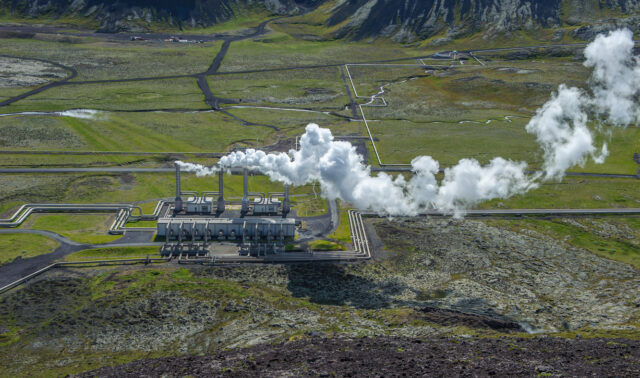Nuclear energy is increasingly recognised as a complementary method of energy generation to renewables. Now, a new generation of smaller, modular reactors could be used to power a new generation of data centres. Abundant nuclear energy could see the next generaiton of campuases built at never-before-seen scales. It’s a potentially necessary step for the industry, as operators look for ways to host burgeoning artificial intelligence (AI) workloads.
Nuclear-powered Bitcoin
Back in 2021, the Ukrainian government needed cash. Maybe someone thought it would be useful to have some liquid funds to hand. You know, in case they needed to buy several billion dollars worth of tanks, missiles, and bullets a year later. But, really, who can say?
As part of its efforts to create new revenue streams for the country, the Ukrainian government decided to invest heavily in building some of the largest data centres the region had seen. The sites would have a capacity of somewhere between 250 MW and 500 MW—almost unthinkably large. The plan was to use them to mine bitcoin. Today, the idea of peacetime Ukraine, a 250 MW data centre being considered unthinkably big, and a massive crypto-mining scheme seems dated.
However, one aspect of the story puts the whole thing ahead of its time. Had their construction not been derailed by Putin’s invasion a year later, the massive data centres would have been powered by neclear energy.
Built next door to one of the country’s four biggest nuclear generators, the government’s hope was that “the data centres would help use idle load and reduce the burden on transmission systems”.
Now, it’s uncertain if the facility will ever be completed. However, the idea of using nuclear energy as a source of cheap, clean electricity to fuel increasingly power-hungry data centres has, at the very least, outlived the crypto movement.
Nuclear powered data centres?
Driven by the increased need for capacity amid the AI boom, data centre operators are scrambling for ways to cost-effectively and sustainably fuel a new generation of facilities.
“A normal data centre needs 32 megawatts of power flowing into the building. For an AI data centre it’s 80 megawatts,” Chris Sharp, CEO of Digital Realty told the BBC in February 2024. “Our industry has to find another source of power.”
The increasing demand for clean energy in the midst of an already sluggish global transition away from fossil fuels is pushing the data centre sector into an energy crunch. Expanding capacity while moving towards net zero seems logically impossible.
Renewables like solar and wind provide huge amounts of power some of the time. However, when the wind dies down and the sun sets, that power goes away. Data centres need a baseline source of reliable, abundant, cheap power.
SMRs and data centres: a perfect match?
Increasingly, that seems to be nuclear. This is especially true as small modular reactors (SMRs) grow in popularity.
These smaller, modular reactors are gaining popularity in countries with ageing large scale nuclear capabilities like France and Belgium.
Not only that, but countries tat never built out nuclear infrastructure to a great degree are also exploring the possibility of SMRs. The UK, for example, is strongly supporting SMR adoption. There are plans in place to invest £20 billion over 20 years to develop a fleet of power plants covering up to 25% of the country’s electricity needs. Leading this effort is Rolls-Royce, which aims to deploy 16 of its 470MW SMR generators across the UK.
If SMRs can provide abundant clean electricity, what’s to stop you bolting one to a data centre?
Nuclear data centre campuses
In the US, Microsoft recently put out feelers to hire a “principal program manager” to lead the company’s nuclear energy strategy. In the country’s data centre capital, Virginia, Green Energy Partners (GEP) recently moved a step closer to building a campus powered by SMR technology. The 641 acre plot could eventually house 19 data centres powered by “four to six” SMRs.
Commercially available SMRs probably won’t hit the market in the US until the end of the decade. Nevertheless, early stage designs recently approved by the US Nuclear Regulatory Commission have already caused a stir in the country’s data centre market. The reactor certified for use in the US by the Nuclear Regulatory Commission generates approximately 50MW of power. The facility also uses a light-water design, requiring a facility about a third of the size of a standard power plant.
AI power consumption goes nuclear
The amount of readily available power from SMRs could be a vital answer to the looming question of AI. The technology is already putting a heavy finger on the scales of data centre power consumption. The graphic processing units used to host generative AI consume four times the power of cloud servers. At the current pace of adoption, McKinsey estimates the power needs data centres in the US will jump from 2022’s 17 GW to 35 GW by 2030.
“That’s going to put such a strain on resources, particularly on power infrastructure, let alone data centre capacity infrastructure,” Dominic Ward, chief executive of data centre company Verne Global, told Reuters.
Operators are also paying attention to the possible the green credentials of nuclear power in data centre infrastructure. “There is a well up of interest in nuclear as a potential solution for power-constrained markets that the data centre industry has been challenged with,” Alan Howard, a principal analyst at Omdia told Data Centre Knowledge. “It’s really clean energy. To get to a net-zero economy, nuclear is going to have to play a big role.”
- Infrastructure & Cloud











